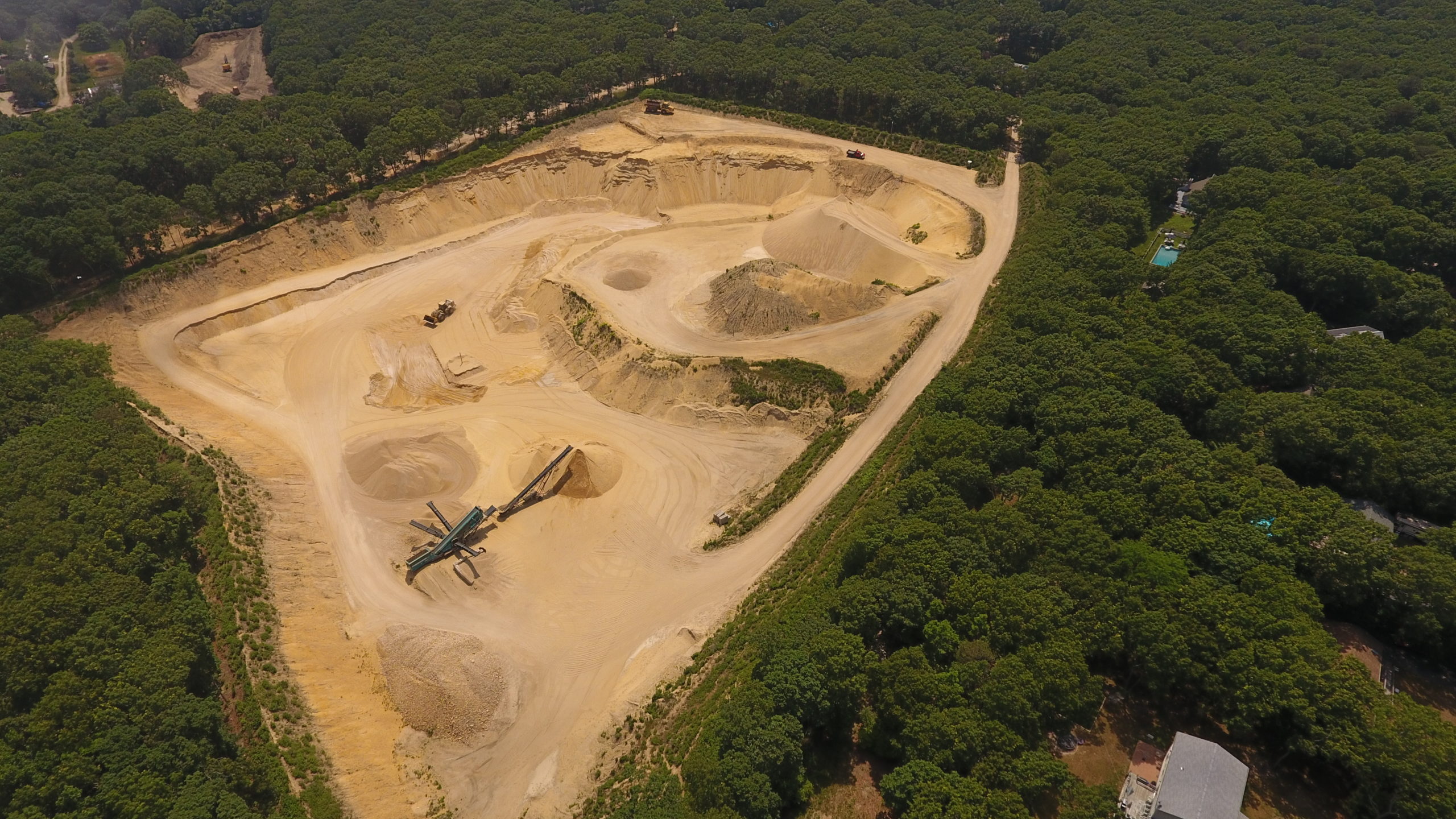
The owner of a sand mind off Middle Highway in East Hampton has filed a new court proceeding against East Hampton Town and the Town Zoning Board of Appeals seeking a county court to annul a ruling from this spring that the mine may not be dug 110 feet deeper — creating an artificial “lake” some 100 feet deep and 6 acres across.
The lawsuit, filed on August 10 in Suffolk County Supreme Court, claims that former Building Inspector Ann Glennon and the ZBA did not have the authority to rule that extending the depth of the mine down an additional 110 feet violated town zoning because the ultimate final disposition of the property will be as “wildlife habitat and lake” — which attorneys for the mine argue is neither a violation of town code nor within the purview of the building inspector or ZBA.
In April, the ZBA sided with Glennon, who has since retired, supporting her determination that creating a man-made lake would require additional town permitting and that the yearslong process of mining the sand that would ultimately create the lake cannot commence.
The 11-acre mine, known by its corporate name, Sand Highway LLC, has been owned by Patrick Bistrian III since 2018, and is approaching the limits of its original state-issued mining permit.
The mine was originally permitted in the 1980s, when it was owned by the Talmage family, to excavate 11.6 acres of the 14.2-acre property to a depth of 40 feet, which would halt mining about 10 feet above the groundwater table.
In 2018, Bistrian applied to the state for permission to deepen the limit of mining by 110 feet on a 6-acre portion of the property, digging through the groundwater table, effectively creating a lake of exposed groundwater.
The proposal, including a “reclamation” plan, as required for all sand mines, said that when mining operations had reached their new limits, the property would be extensively revegetated with native plants and aquatic species along the edges of the new lake.
But the lake at the heart of the purported wildlife habitat would be some 100 feet deep with a steeply plunging perimeter that would not support much in the way of vegetation or wildlife like waterfowl or fish, and town officials have said the area would likely have to be essentially cordoned off to prevent access, for safety concerns.
The proposal was approved by the State Department of Environmental Conservation, which oversees mining operations statewide, in March 2020. The town promptly sued, arguing that the additional mining constituted an expansion of a “preexisting, nonconforming” use, which is not allowed under town code.
In 2021, a judge dismissed the bulk of the town’s case, saying that the additional depth of mining did not expand the original permit — but did so a day after a higher state court had issued a contravening ruling in another case, involving a Noyac sand mind and based on the same arguments. He then took the curious step of back-dating his ruling so that it would appear to have been issued the day before the superior court ruling.
The town appealed the ruling and has been granted a temporary restraining order barring Bistrian from proceeding with any excavations beyond the original permit parameters, for the time being.
The ruling in the case of the Noyac mine, Sand Land, said that the DEC could not approve any modifications to permits for mines unless they met town codes.
Asked if the project as proposed met town codes, Glennon had issued a ruling in April to the contrary, supported by the ZBA in June, spurring the latest skirmish.
“Vertically deepening your mining operation to the point of creating a 6.05-acre lake to a maximum depth of 110 feet does not change the use of the property to a conforming ‘nature preserve or sanctuary,’” the ZBA said in its support of Glennon’s findings. “While a ‘nature preserve or sanctuary’ is permitted in the A3 zoning district, only town-owned properties can be designated for inclusion in the town’s nature preserve.”
Bistrian’s attorneys called the stance a “red herring” that pigeonholes their use of the term nature preserve to the definition of the term in the town code.
They argue that the end-result of the “reclamation” work conforms to the property’s residential zoning district and that, regardless, while the DEC may have to confer with the town code on permitting mines, the town cannot require a mine to get additional local permits, because mining operations are solely regulated by the state, and that neither Glennon or the ZBA had the authority to rule on the whether reclamation work was a conforming use because the matter is still before the courts in the original 2020 lawsuit filed by the town.
“For these reasons,” Bistrian’s attorney, Brenda Sheehan, writes in her argument, “the April 11 determination and the ZBA affirmance were beyond the authority of the town, inspector Glennon and the ZBA, in violation of lawful procedure.”
Town officials said that they had not yet had a chance to review the most recent lawsuit and could not comment on the matter.